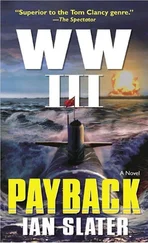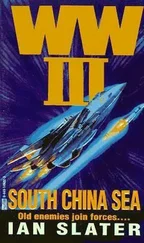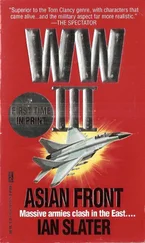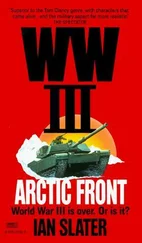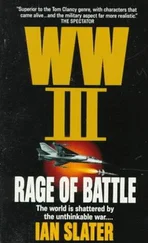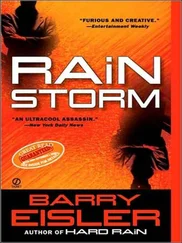The attack board, its outline surprisingly sharp in the flashlight’s beam because of the renowned clarity of the waters in the Pacific Northwest, was already registering temperature, depth, and direction as the two divers began their search. Within five minutes of beginning the grid, the fog-filtered dawn that had afforded them initial light, allowing them to see the variegated colors of marine life passing by, grew faint as they went deeper. Midway along the northern perimeter of their search grid, Dixon, through dim flashes of silver herring, saw the temperature on both the attack board and on the mercury thermometer built into the Coke-can-sized water bottle sampler on the board’s right-hand side registering an increase of three degrees. It was a big jump from the norm for that time of year. His left hand on the board’s side grip, and letting his flashlight temporarily dangle from his wrist, he used his right hand to scratch 3 degree jump @ 31 feet on the board’s slate, and pointed at the board’s thermometer for Albinski to see. Albinski was signaling them up for a surface temperature check.
As they broke through the undulating gray mirror above them that was the sea’s surface, they noticed a drop in temperature here too, of half a degree, which they knew would have been enough to register as an anomaly. Dixon gave the thumbs-up to the mechanic on the Bruiser fifty yards away, then both divers descended again.
At forty-five feet they saw that the temperature had changed from three degrees at thirty-one feet to four degrees. Dixon tripped the water bottle through an arc of 180 degrees. Both spring-loaded rubber stoppers at either end clamped shut, trapping the water sample at that depth, the 180-degree fall breaking the mercury column so that the temperature reading now registered on the thermometer would remain the same, no matter how deep or shallow they dived. Dixon scratched the slate board, 45 feet, bottle tripped . As they went deeper, the temperature rose another degree, though it should have been falling, but the lateral dimension of the anomalous patch at this depth was small, no more than twenty yards across. The whole anomaly grid took the shape of a dumbbell, about fifteen yards wide at its waist and fifty to sixty yards long, the ends of the dumbbell each about thirty yards across. They went deeper still, and the temperature became hotter relative to the surrounding ocean, the diameter of the dumbbell’s waist now decreasing to no more than five yards across. From this they were able to deduce that whatever effluent was at work, it was pluming up from the ocean bottom in a conical shape, narrow at its source, widest at the surface, like a double ice cream cone. Albinski hypothesized that the source point of the plume was only a few yards or even feet wide. The one thing they were sure of was that whatever was bubbling up from the depths, its relative salinity compared to the surrounding ocean had no doubt produced the different color effect seen from on high by Darkstar. It was definitely not oil.
Soon Albinski and Dixon were down to 115 feet, pressing the normal safety limits for this section of the strait. Albinski tapped his buddy’s arm, signaling them to go up. Dixon was keen to press beyond the normal safety limit, but for veteran Albinski, there was no sense in risking your life if people weren’t in danger. This was strictly a recon grid for COMSUBPAC-9, and recon in peacetime wasn’t worth risking the bends for. That way, you stayed alive, lived long enough to collect a veteran’s full pension and no-exception catastrophic medical coverage for you and your family. Besides, Albinski thought he had a damn good idea what was causing the anomaly.
The RIB’s coxswain, his observer, and the mechanic strained to help the two divers aboard the RIB. Albinski and Dixon streamed with water in the gray dawn, like two harbor seals sliding over the gunwales, the Bruiser bobbing up and down in the increasingly aggressive chop.
“Find anything?” asked the coxswain as he turned the Bruiser downwind for the run back to Port Angeles.
“Temperature anomaly,” replied Dixon, pulling up his face mask. “No oil, though.”
“Upwelling?” the coxswain asked. “Freshwater spring?”
“Can’t tell till we do a chemical analysis of the water sample,” Albinski replied. “I think it’s probably a water tank or refrigeration unit leaking from some old wreck. Not very big. Probably an old trawler. Something relatively small.”
“Wouldn’t it have leaked out by now, whatever it is?” asked the coxswain.
“No,” replied Albinski. “The Arizona in Pearl Harbor is still leaking oil from when it was sunk in ’forty-one.”
The coxswain shook his head, his voice rising against the brisk wet wind and the noise of spray splattering the RIB’s salt-encrusted windscreen. “Coast Guard says they did a sonar run over it. Saw nothing.”
“Could’ve missed it,” countered Dixon, dropping his flippers onto the equipment slab. “A hundred yards either way and you’d see zilch.”
This possibility, the coxswain knew, would have been more than likely in the old pre-GPS days, but not now. Albinski and Dixon had been given precisely the same coordinates as the Coast Guard vessel.
“Maybe it is a simple upwelling,” conceded Albinski. “Freshwater or saline from an undersea aquifer?”
“But even the Coast Guard sonar trace saw nothing,” countered Dixon. “So how come we get a temperature anomaly and the CG doesn’t?”
That had Albinski and everyone else on the Bruiser stumped.
As the Bruiser returned to Port Angeles, the coxswain radioed ahead to base. “How long will we have to wait until we get the results of our water bottle analysis?”
“Two hours. Admiral Jensen’s given this one top priority.”
“It’s nothing,” opined the mechanic as the coxswain ceased transmission. “Jensen’s a worry gut. Glass half empty — all the time. Admiral Gloomboots.”
They all laughed at “Gloomboots,” a name that stuck for a full hour and forty-three minutes until the Coast Guard’s Seattle lab e-mailed Port Angeles the chemical analysis of Albinski’s water bottle sample. Highly toxic , and proof positive that whatever the source material was that had reacted with the supersaturated saline solution of the sea, it had generated a “significantly high temperature differential of plus or minus four degrees.”
Everyone was suddenly a Gloomboots. First question: Why hadn’t the Coast Guard water sample revealed any toxicity? Even if the Coast Guard vessel had not passed exactly over the dumbbell zone and somehow missed a clear sonar profile of the sea bottom there, the surrounding water surely would have been toxic enough to have been measured by a Coulter counter that could identify minute parts per million. Second question: Were there any known naturally occurring toxicities of this type on the sea bottom in that part of the strait?
The answer to the second question was no. Oceanographic charts showed no wrecks in that location that might be leaking toxic materials.
Albinski, however, reflecting on his long SEAL experience of invasion beach surveys, was able to offer a reasonable explanation for the Coast Guard vessel not discerning any temperature anomaly. Its prop would have been churning the sea’s surface so violently, he said, and sucking in such a flood of colder water from outside the dumbbell perimeter, that any temperature difference could have been so small as to be virtually undetectable, given the mix.
“All right,” Jensen told Duty Officer Morgan at Bangor. “Order a side-scan sonar.” The expense was now warranted, for he knew that if Greenpeace, the Sierra Club, or any of the other environmental organizations got wind of this anomaly — it didn’t bear thinking about. And that very morning the Chief of Naval Operations in Washington, D.C., had e-mailed a request for Jensen to forward an updated résumé vis-à-vis his estimation of COMSUBPAC-9’s liaison with Puget Sound residents. The CNO was doubtless gearing up in the search for a successor who rated high in PR skills. In the same e-mail the CNO asked Jensen to rate his own performance on a scale of one to ten. Jensen e-mailed that he was a nine. He told Margaret he believed he was a ten but it was prudent to show a little humility.
Читать дальше


